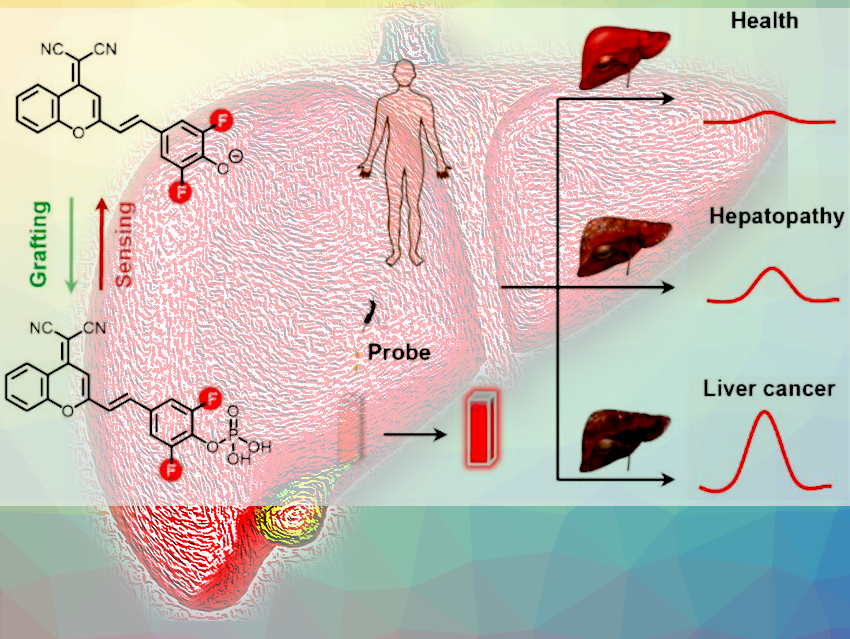Abnormal levels of alkaline phosphatase (ALP) in serum can indicate liver disease. The colorimetric method has been widely used for clinical ALP detection due to its simplicity and efficiency. However, this method has practical limitations, including poor selectivity, susceptibility to interference, and a limited linear range, leading to incorrect positive results.
To address these issues, Weihong Zhu, Qi Wang, and colleagues, East China University of Science and Technology, have developed an ALP-activated probe called DCM-2F-HP. They introduced fluorine atoms to enhance ionization ability. The strategic incorporation of difluoro substitution promotes the delocalization of negative oxygen ions into the benzene ring, resulting in complete ionization at pH 7.4. As a result, the probe demonstrates exceptional specificity and accuracy in detecting ALP in human serum.
In a study involving 77 human serum samples, the researchers measured the detection limit of ALP using DCM-2F-HP to be 0.1 U L-1, indicating ultra-sensitivity to ALP expression. Moreover, the fluorescence method based on DCM-2F-HP not only correlates significantly with clinical colorimetry but also enables the differentiation of ALP patients from healthy volunteers and the assessment of liver disease progression.
Given its simplicity, sensitivity, and accuracy, the researchers consider DCM-2F-HP, the ALP-activatable NIR fluorescent probe, a significant advancement in detecting ALP activity in human serum. It holds great potential as a valuable tool for early-stage hepatopathy warning.
- Serum‐based detection of liver pathology using a fluorogenic alkaline phosphatase probe,
Tijian Zhou, Li Li, Zhirong Zhu, Xiaoyan Chen, Qi Wang, Wei-Hong Zhu,
ChemBioChem 2023.
https://doi.org/10.1002/cbic.202300321




